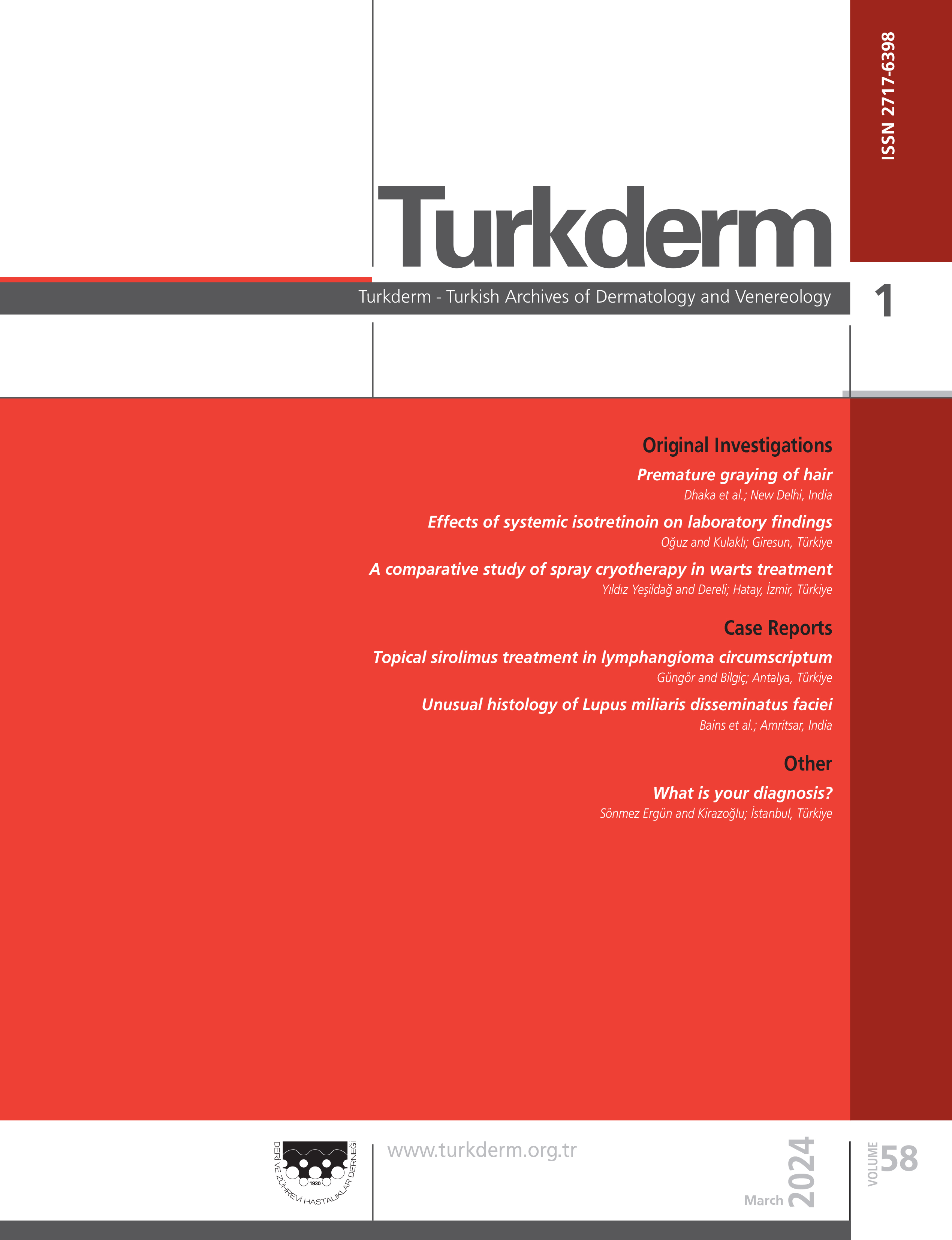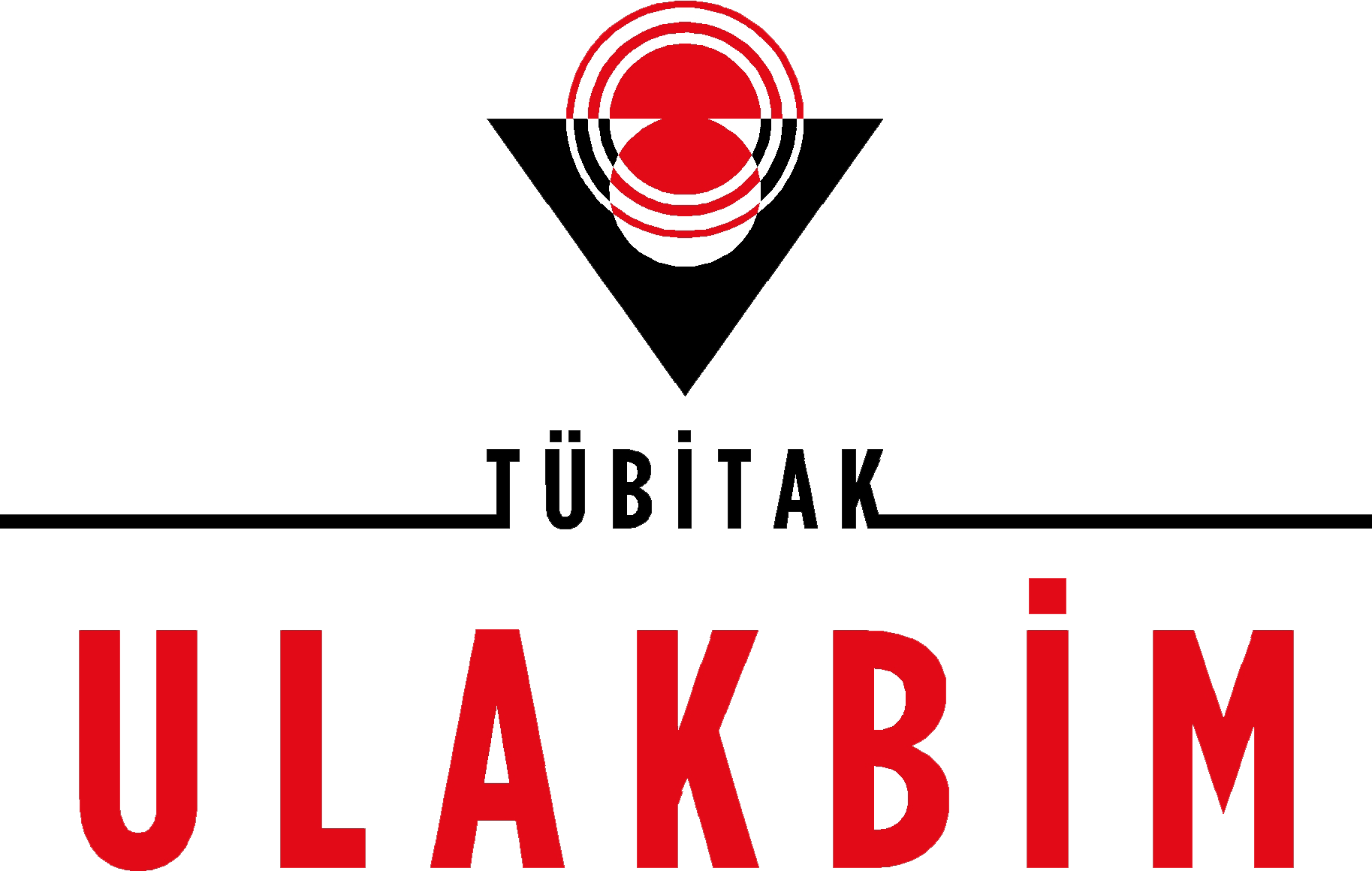Erbium: YAG Laser in xanthelasma palpebrarum treatment
Ayten Ferahbaş, Serap Utaş, Ümit UkşalErciyes Üniversitesi Tıp Fakültesi Dermatoloji Anabilim DalıBackground and design: Xanthelasma palpebrarum, or simply xanthelasma, is one of the most commonly occuring xanthomas and consists of bright yellow lipomatous plaques that appear in the upper and lower eyelids. All of the treatment methods have some disadvantages, including the risk of scarring or postoperative dispigmentation, chemical irritation of the conjunctiva, or the need for systemic or local anesthesia. In this
study, we aimed to evaluate effectiveness of erbium: yttrium-argon-garnet (Er: YAG) laser in the treatment of xanthelasma palpebrarum, and share results of this method which is a new treatment method for dermatologists in our country. MATERIALS-METHODS: A total of 25 xanthelasma lesions of the 11 patients (seven women and four men) aged 25-47 years (mean±SD: 38.72±7.72) were treated by an Er: YAG laser. Before the treatment, total cholesterol and triglyceride levels of the patients were measured. The follow-up period was between 3-30 months (mean±SD: 17.90±10.80). RESULTS: Re-epithelialization of the skin started after five to seven days and postoperative erythema resolved
after an average of two to three weeks. In one patient who had high trygliserid and total cholesterol levels, hipopigmentation and new xanthelasma plaques developed at the edge of the old lesions 9 months later. In the others, adverse effects did not occur.
CONCLUSION: The Er: YAG laser is an ideal treatment option for xanthelasma palpebrarum with no or few side effects.
Ksantelazma Palpebrarum Tedavisinde Erbiyum: YAG Lazer
Ayten Ferahbaş, Serap Utaş, Ümit UkşalErciyes Üniversitesi Tıp Fakültesi Deri ve Zührevi Hastalıklar Anabilim DalıKsantelazma palpebrarum (KP) veya kısaca ksantelazma, ksantomaların en sık görülen formu olup üst veya alt göz kapağında, iç kantusa yakın lokalize olan parlak sarı lipomatöz plaklardan oluflur. Tedavide kullanılan yöntemlerin skar veya postoperatif pigmentasyon bozukluğu, dermal atrofi, konjuktivanın kimyasal irritasyonu,
sistemik anesteziye gereksinim göstermeleri gibi bir takım yan etkileri bulunmaktadır. Bu çalışmada erbium: yttrium-argon-garnet (Er: YAG) lazerin ksantelazma palpebrarum tedavisinde etkinliğinin değerlendirilmesi ve ülkemizde dermatologlar için henüz yeni olan bu uygulamanın sonuçlarının paylaşılması amaçlandı. Yaşları 25-47 (ort±SD: 38.72±7.72) arasında değiflen yedisi kadın, dördü erkek 11 hastanın 25 ksantelazma lezyonu Er: YAG lazer ile tedavi edildi. Tedavi öncesi hastaların serum total kolesterol ve trigliserid düzeyleri belirlendi.
Hastalar 3-30 ay (Ort±SD: 17.90±10.80) süresince takip edildi. Epitelizasyon 5-7 günde oluştu ve postoperatif eritem ortalama 2-3 hafta içinde kayboldu. Trigliserid ve kolesterol düzeyi yüksek olan bir hastada hipopigmentasyon ve eski lezyonların kenarında 9 ay sonra yeni ksantelazma plakları oluştu. Diğer hastalarda yan etki gözlenmedi. Er: YAG lazer KP tedavisi için belirgin yan etkisi olmayan ideal bir tedavi seçeneğidir.
Corresponding Author: Ayten Ferahbaş, Türkiye
Manuscript Language: Turkish






















